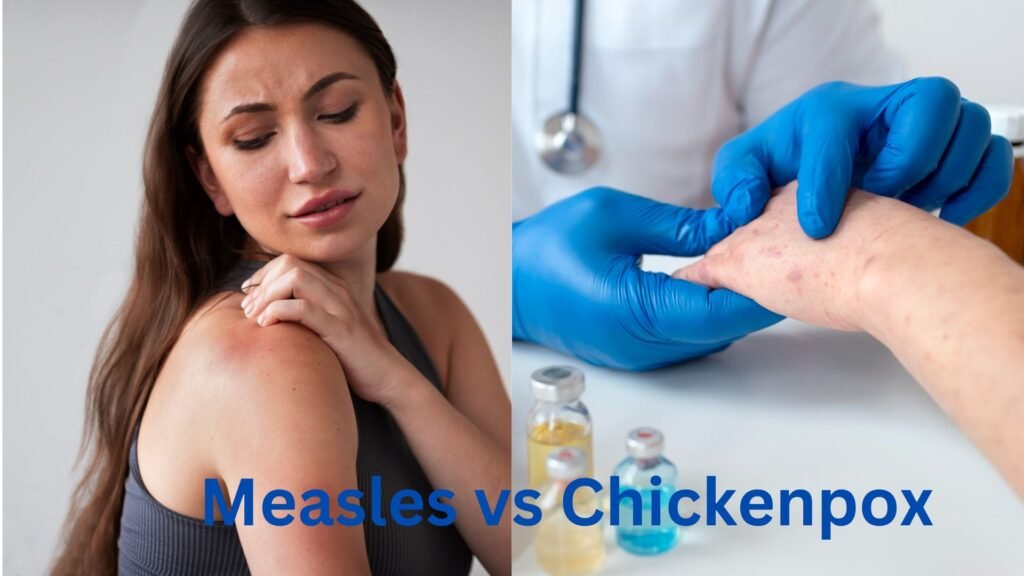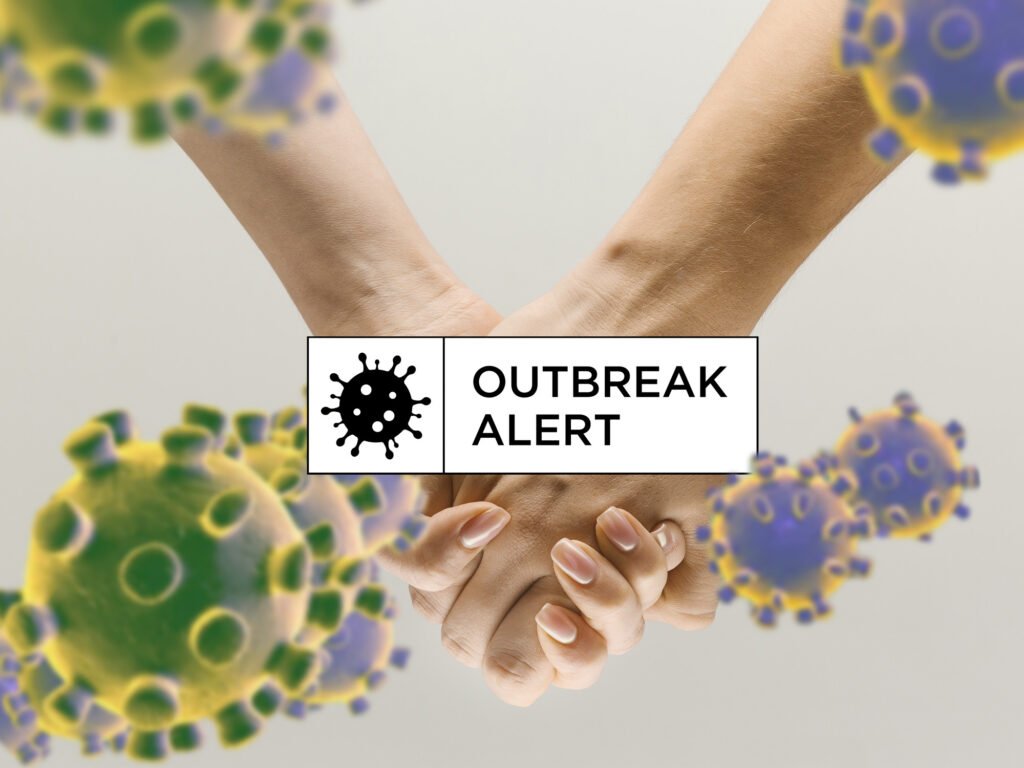Introduction
Measles, a highly contagious viral infection, has left an indelible mark on human history, shaping the course of public health and infectious disease management. From ancient times to the present day, this disease has played a significant role in global health narratives. As we delve into the historical impact of this infectious disease, it becomes evident that understanding the threat posed by measles is crucial for safeguarding communities worldwide. In this article, we embark on a journey to debunk prevalent vaccination myths, aiming to demystify misconceptions that surround the measles vaccine. Beyond dispelling falsehoods, our exploration extends to the broader implications for global health, emphasizing the interconnectedness of communities and the imperative of collective immunity. By unraveling the complexities of this disease and vaccinations, we hope to contribute to a more informed public discourse, fostering a healthier and more resilient global society.
Unraveling the Intricacies of Measles: A Comprehensive Overview

A highly contagious viral infection has been a cause of concern for public health worldwide. Understanding the basics of measles is crucial for both prevention and timely intervention. In this article, we delve into the definition and characteristics of this disease, its modes of transmission, and the common symptoms and complications associated with this infectious disease.
Definition and Characteristics of Measles:
It is also known as rubeola and is an infectious disease caused by the measles virus. The virus primarily targets the respiratory system, leading to a distinctive rash and a range of systemic symptoms. This disease is a member of the Paramyxoviridae family, and its highly contagious nature makes it a significant public health issue.
Characteristic features of measles include a prodromal phase, which involves fever, cough, and runny nose, followed by the appearance of the hallmark maculopapular rash. The rash typically starts on the face and gradually spreads to other parts of the body.
Transmission and Contagious Nature:
Measles is primarily transmitted through respiratory droplets expelled when an infected person coughs or sneezes. The virus can linger in the air and on surfaces, making it highly contagious. Individuals who have not been vaccinated or previously infected are at the greatest risk of contracting the virus.
The contagious nature of measles is underscored by its ability to spread rapidly within communities, especially in crowded and inadequately vaccinated populations. The virus can remain viable on surfaces for up to two hours, contributing to the ease of transmission.
Common symptoms and complications:
Common Symptoms:
-
- High fever
- Cough
- Runny nose
- Conjunctivitis (red eyes)
- Koplik’s spots (small white spots with bluish-white centers) inside the mouth
Complications:
-
-
- Pneumonia: Measles can lead to severe respiratory complications, particularly in young children and individuals with compromised immune systems.
- Encephalitis: In rare cases, measles can cause inflammation of the brain, leading to neurological complications.
- Ear infections: Measles increases the susceptibility to ear infections, which can result in hearing loss.
-
Measles vs Chickenpox

Measles and chickenpox are both infectious viral diseases, yet they differ in significant ways. It is caused by the measles virus, also known for its highly contagious nature, and can lead to severe complications, especially in young children. It is characterized by a distinctive red rash, a high fever, and respiratory symptoms that can be prevented through vaccination. On the other hand, chickenpox, caused by the varicella-zoster virus, is typically milder but still uncomfortable. The hallmark of chickenpox is its itchy, blister-like rash that spreads across the body. Unlike measles, chickenpox can often be managed at home with supportive care, although vaccination remains a key preventive measure. Despite their differences, both diseases highlight the importance of vaccination in maintaining public health and preventing the spread of these potentially serious infections.
Read Also: Yeast Infections: Causes and Effective Treatment Strategies
Safeguarding Health: Unveiling the Importance of Measles Vaccination
In the realm of public health, the significance of vaccination cannot be overstated, particularly when it comes to preventing the spread of highly contagious diseases such as measles. This article delves into the multifaceted importance of measles vaccination, shedding light on its effectiveness, the role it plays in achieving herd immunity, and its pivotal role in curbing outbreaks and lessening the global measles burden.
Overview of Measles Vaccination and its Effectiveness
The’s vaccination has proven to be a formidable tool in the fight against this infectious disease. The measles vaccine, typically administered as part of the measles-mumps-rubella (MMR) vaccine, is highly effective, conferring immunity to approximately 97% of individuals after two doses. This robust protection significantly reduces the likelihood of contracting and spreading the measles virus.
Significance of Achieving Herd Immunity:
Herd immunity is a collective defense mechanism that occurs when a high percentage of a population is immune to a specific disease. Achieving herd immunity is paramount to protecting vulnerable individuals who cannot receive vaccines, such as infants and those with certain medical conditions. Measles, with its high transmission rate, requires vaccination coverage of around 93–95% to establish herd immunity, preventing the rapid spread of the virus within communities.
Role of Vaccination in Preventing Outbreaks and Reducing the Global Measles Burden:
Vaccination serves as a critical line of defense for preventing measles outbreaks. The global effort to increase vaccination coverage has yielded promising results, with many regions witnessing a decline in measles cases. By vaccinating large populations, public health initiatives aim to reduce the global measles burden, ultimately working towards the eradication of this highly contagious disease.
Debunking Vaccination Myths

Unfortunately, misinformation surrounding vaccines has led to hesitancy and refusal in some communities. It’s crucial to address common misconceptions and debunk vaccine myths to ensure widespread acceptance and uptake of vaccination.
Addressing Common Misconceptions about Measles Vaccines:
Autism and Vaccine Link:
One prevalent myth suggests a link between measles vaccines and autism. Numerous scientific studies and health organizations, including the Centers for Disease Control and Prevention (CDC) and the World Health Organization (WHO), have unequivocally debunked this myth, emphasizing that vaccines do not cause autism.
Vaccine Ingredients:
Concerns about vaccine ingredients often circulate, with some fearing the presence of harmful substances. Experts rigorously test vaccine components for safety in reality, selecting ingredients for vaccines with great care to boost the body’s immune response while posing no significant risk to health.
Vaccine Safety and Side Effects:
Vaccine safety is of utmost priority in public health programs. Extensive research and rigorous testing are conducted before vaccines receive approval. While mild side effects may occur, such as soreness at the injection site or a low-grade fever, severe reactions are exceedingly rare. The benefits of vaccination in preventing diseases far outweigh the minimal risks associated with side effects.
Presenting Scientific Evidence and Expert Opinions:
To dispel vaccine myths, it is essential to present the public with credible scientific evidence and expert opinions. Respected health organizations and professionals endorse the safety and efficacy of vaccines. Drawing on the wealth of research and expert consensus can help build trust in vaccination programs. encouraging individuals to make informed decisions for their health and the well-being of their communities.
A Global Health Wake-Up Call

Measles Outbreaks: Case Studies Unveiling a Global Challenge
In recent years, measles outbreaks have cast a shadow across different corners of the globe. Serving as poignant reminders of the importance of vaccination efforts and the consequences of waning immunization rates.
Highlighting Recent Measles Outbreaks Around the World
From densely populated urban centers to remote rural communities, measles outbreaks have made a disconcerting comeback. Countries like the United States, the Philippines, and the Democratic Republic of the Congo have witnessed a surge in cases, challenging health systems and necessitating swift responses.
Examining Factors Contributing to Outbreaks
Several factors contribute to the resurgence of measles outbreaks, with vaccine hesitancy emerging as a key player. Misinformation, distrust in vaccines, and logistical challenges in reaching vulnerable populations have paved the way for the virus to regain a foothold in communities worldwide.
Real-World Consequences of Low Vaccination Rates
The repercussions of low vaccination rates extend beyond the immediate health impact. Measles outbreaks strain healthcare resources, disrupt routine healthcare services, and pose significant economic burdens on affected regions. Moreover, they leave a lasting imprint on the lives of those who suffer from this preventable disease.
Global Health Implications: Measles as an Indicator of Broader Challenges
Measles as an Indicator of Broader Global Health Challenges
Measles outbreaks act as a canary in the coal mine, signaling broader global health challenges. Weak healthcare infrastructure, inadequate access to vaccines, and socioeconomic disparities amplify the risk of disease resurgence. Addressing this disease is not just about tackling a single virus but confronting systemic issues that compromise health on a global scale.
It’s Impact on Vulnerable Populations
Vulnerable populations, including infants, pregnant women, and individuals with compromised immune systems, bear the brunt of measles outbreaks. The virus exploits existing health disparities, disproportionately affecting those with limited access to healthcare resources. Eradicating this disease requires a targeted approach to uplift the most marginalized communities.
The importance of International Collaboration and Vaccination Campaigns
To combat it effectively, international collaboration is paramount. Sharing resources, expertise, and best practices can enhance vaccination campaigns and bolster healthcare infrastructure.
Measles nhs
Measles, a highly contagious viral infection, has been a significant focus for the National Health Service (NHS). The NHS plays a pivotal role in the prevention, diagnosis, and management of measles cases across the United Kingdom.
The NHS employs a multifaceted approach to tackle measles, including:
- Public awareness campaigns
- Routine immunization schedules
- Swift responses to suspected cases are needed to prevent outbreaks.
Healthcare professionals at the NHS dedicate themselves to ensuring that individuals receive not only vaccinations but also education about the importance of timely immunization. The NHS’s commitment to measles prevention aligns with its broader mission of safeguarding public health, reflecting a holistic and proactive approach to addressing infectious diseases within the community.
Conclusion
In conclusion, the gravity of the measles threat cannot be overstated, and it is imperative to recap key points to underscore the significance of proactive measures.
It is a highly contagious and deadly disease that has witnessed alarming resurgences in various parts of the world due to declining vaccination rates. Vaccination remains the most effective tool for preventing the spread of measles and protecting vulnerable populations. To address this pressing issue, a resounding call to action is necessary.
Governments, healthcare professionals, and communities worldwide must collaborate to promote vaccination campaigns, ensuring accessibility and affordability. Moreover, fostering informed communities is crucial to dispelling vaccine myths and misinformation, emphasizing the significance of global health awareness.
Lastly, the concept of collective responsibility must be championed. Only by working together can we overcome the challenges posed by measles and strive towards a healthier, more resilient global community.
